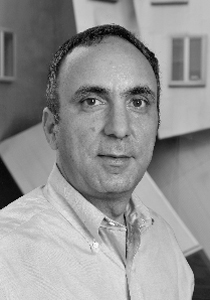Citation
It is my great pleasure to announce Dara Entekhabi as the recipient of the 2015 Hydrologic Sciences Award. This recognition shows the respect and admiration that my colleagues and I have for Dara’s contributions to the hydrology community. Dara’s professional activities span an impressive range, from theoretical insights, through innovative data analyses, to the management of an important satellite mission.
Dara’s scientific work is based on his appreciation of the key role of the land surface in hydrology and meteorology. Dara’s contribution has been to clarify the complex processes and feedbacks that take place at the land-atmosphere boundary. His activities have spanned the disciplines of hydrology, meteorology, and remote sensing, as reflected in the recognition he has received from the associated professional societies: the American Geophysical Union, the American Meteorological Society, and the Institute of Electrical and Electronics Engineers.
Dara’s appreciation of the importance of the land-atmosphere boundary led him to seek more accurate observations of soil moisture and evapotranspiration, not only at isolated times and locations but in a comprehensive way, through remote sensing, that reveals the variability of the relevant processes. Dara was an early leader in applying the methods of data assimilation to this task, using land surface models to constrain an otherwise ill-posed inverse problem. Dara has also made important contributions in climate science that include his work on continental-scale precipitation recycling and on the connections between snow anomalies, boundary layer evolution, and Northern Hemisphere atmospheric circulation.
The culmination of this impressive set of contributions has been Dara’s leadership in the SMAP (Soil Moisture Active Passive) satellite mission. I think it is fair to say that this mission would not have taken place without Dara’s unceasing efforts and organizational skills. Dara’s tireless work and substantial accomplishments with SMAP over the last several years really deserve to be acknowledged with a collective “thank you” from the hydrologic community.
—Dennis B. McLaughlin, Massachusetts Institute of Technology, Cambridge
Response
I thank my colleagues for their kind words and the recognition. It is a collective gratitude since the cited efforts all result from collaboration with colleagues and students. I stand as a proxy for them.
I was fortunate to enter this field at a revolutionary time. Hydrology as a geoscience marked a milestone the year I started as a young faculty. The book Challenges and Opportunities in the Hydrologic Sciences was published, and it was inspiring. It was the culmination of years of deliberations by a National Research Council committee chaired by Pete Eagleson. As an apprentice and student of Pete, I was fortunate to witness the process and absorb its vision.
Since then and together with extraordinary students and colleagues, we have feasted on the opportunities that the revitalized field laid in front of us. The shifted focus on hydrology as a geoscience meant exploring at the interface of meteorology and hydrology. The land surface no longer represented a marking boundary for the disciplines. Walls had come down, and there was much to explore and learn.
As recognized in the Blue-Book chapter on data (National Research Council, Opportunities in the Hydrologic Sciences, 1991), in the hydrologic sciences like other sciences, significant advances often result from new measurements that can inspire rethinking of paradigms. In another chance encounter, I found myself an apprentice again. This time it was Eni Njoku from the Jet Propulsion Laboratory who introduced me to remote sensing. I have had the extraordinary opportunity of working on hydrology mission concepts and flight projects. These are large team efforts, and I am grateful for the chance to work alongside these teams.
I have a long list of students and colleagues to thank. I am sad that I cannot list them all. I am glad that the list is that long.
—Dara Entekhabi, Massachusetts Institute of Technology, Cambridge
Citation: AGU (2015), Entekhabi receives 2015 Hydrologic Sciences Award, Eos, 96, doi:10.1029/2015EO035565. Published on 17 September 2015.
Text © 2015. The authors. CC BY-NC 3.0
Except where otherwise noted, images are subject to copyright. Any reuse without express permission from the copyright owner is prohibited.

